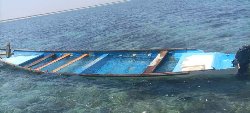China and Russia invited to new aircraft financing agreement
OECD – Paris, 25 February 2011
OECD invites China and Russia to join new aircraft financing agreement
OECD Secretary-General Angel Gurría has invited China and Russia to join other countries in implementing a new set of international rules on aircraft financing. This happened during a signing ceremony in Paris today that included all other countries with aviation manufacturing sectors.
“Russia is becoming a prominent commercial aircraft producer and China will begin production in the next few years,” Mr. Gurría said. “It is in everyone’s interest that all aircraft manufacturing countries join this new agreement so the market can function on a level playing field. The OECD export credit system provides enough flexibility to accommodate partner countries, as Brazil’s active participation has clearly demonstrated.”
The new OECD Aircraft Sector Understanding (ASU) updates widely-accepted rules on the use of state financing in support of commercial aircraft exports by five signatory governments: Brazil, Canada, the European Union (including France, Germany, Italy and the UK), Japan and the United States.
Russia and China participated in discussions on the new agreement during 2010 but have not yet decided to join.
The ASU aims to maintain a level and transparent playing field across the global aviation sector. Governments have historically financed 20-30% of all global aircraft sales, making these new rules a key element in continuing efforts to bring order to the world trading system.
Implementation will bring fees for financing transactions closer to market conditions and create new mechanisms to smooth very sharp market movements.
Substantial updates from a previous agreement dating to 2007 include:
unification of the terms, conditions and
procedures under which export credit support is offered to
large aircraft (manufactured by Airbus and Boeing) and
regional aircraft (produced by Bombardier and
Embraer);
creation of a maximum 12-year term for export
credit support;
standardisation of the risk rating system
(in terms of categories and fee levels) for all types of
aircraft; and
unification of underwriting standards,
through the use of equivalent risk reduction techniques in
all risk categories.
The ASU allows a transition period for certain previously ordered aircraft, which will be covered by existing financing terms, within time or volume limits for export credit financing.
The OECD has been at the forefront of multilateral efforts to harmonize state financing of exports for more than 30 years. The Arrangement on Officially Supported Export Credits, which came in to force in 1978, plays an important role in the multilateral trading system. It helps ensure that both OECD and non-OECD exporters compete on the price and quality of their goods and services, not on the support they receive from their governments.
A Sector Understanding on Export Credits for Civil Aircraft was incorporated in the Arrangement in 1986. An update in 2007 included for the first time a framework for exchange of information and the prevention or early resolution of export credit-related disputes.
For further information on the OECD’s work on export credits, visit www.oecd.org/trade/xcred


 UN News: Ceasefire The Only Way To End Killing And Injuring Of Children In Gaza
UN News: Ceasefire The Only Way To End Killing And Injuring Of Children In Gaza ICHRP: US-Japan-Philippines Trilateral Summit Makes The Philippines A Battlefield For US-China Conflict
ICHRP: US-Japan-Philippines Trilateral Summit Makes The Philippines A Battlefield For US-China Conflict East West Center: Environmental Journalist Alexander Kaufman Receives East-West Center’s Inaugural Melvin M.S. Goo Writing Fellowship
East West Center: Environmental Journalist Alexander Kaufman Receives East-West Center’s Inaugural Melvin M.S. Goo Writing Fellowship Compassion in World Farming: Octopus Farm Must Be Stopped, Say Campaigners
Compassion in World Farming: Octopus Farm Must Be Stopped, Say Campaigners UN News: Shipwreck Tragedy Off Djibouti Coast, Drone Attacks Continue At Ukraine Nuclear Plant, Madagascar Cyclone Update
UN News: Shipwreck Tragedy Off Djibouti Coast, Drone Attacks Continue At Ukraine Nuclear Plant, Madagascar Cyclone Update UN News: Aid Lifeline Reaches Sudan's Darfur Region In Bid To Avert ‘Hunger Catastrophe’
UN News: Aid Lifeline Reaches Sudan's Darfur Region In Bid To Avert ‘Hunger Catastrophe’